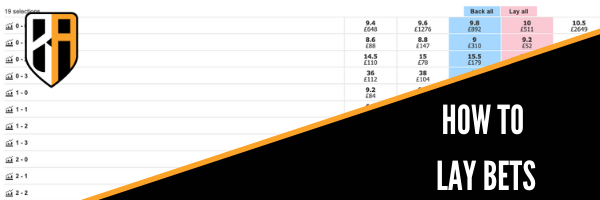Commercial Information
If you sign up for an account through one of the links on this page we may receive a commission from them for this. This does not effect our rankings and there are some sites we do not receive a commission from. All our reviews are independently written. you can read our full affiliate policy below.
18+ | commercial content | begambleaware.org
Note: 18+ Only, terms and conditions apply to all offers, subject to withdrawal at any time. For help and advice on responsible gambling please see begambleaware.org.
Expected Goals (commonly referred to as xG) is a stat that can help us get a view of how a team is performing. It’s a technological dream that makes playing a number of betting markets that little bit easier.
But how? We hear you cry. Below you’ll find our full guide to Expected Goals and exactly how it works.
What Are Expected Goals?
Expected goals are a metric that uses an expansive range of data to make a prediction for the number of goals each team scores. It is produced using data to show how likely a player is to score from the positions they are in.
It’s a complicated algorithm but in very simple terms – the closer to the goal you are the more likely you are to score. An ex goal of 0.1 would be a shot from way out and a 0.9 would be a shot from 2 yards out, for example.
How Do Expected Goals Work?
As you’d expect, the way Expected Goals are predicted isn’t built on a hunch, it uses a large set of data and an incredibly sophisticated algorithm. We’d expect nothing less from Opta.
They go into the depths of their own award-winning data, analysing thousands of matches, tens of thousands of shots, and goals scored in order to make these predictions.
Every detail is covered, exploring how the shot was taken, how it was assisted and the players involved as well as distances, angles, and many more pieces of data.
This is then converted into the expected number of goals a team will score.
This is given as a decimal number due to the complexity of the algorithm, so it’s always worth rounding to the nearest whole in order to get a simpler prediction. Therefore a team with an expected score of 0.72, for example, is more likely to score one goal.
Using xG in Betting Example:
So, let’s say you wanted to bet on a game between Newcastle and West Ham. The Expected Goals data looks like this –
- Newcastle 0.84 xG
- West Ham 1.67 xG
In this instance, West Ham would have the edge according to the metric, with Newcastle expected to score one and West Ham just about scraping two goals. Here’s how Sky sometimes display the data –

What Markets Can Expected Goals Help?
Expected Goals are well worth taking note of as they can really help you in a number of markets.
The scientific algorithm Opta provides is incredibly useful for providing accurate predictions and there are a number of takeaways from it.
Match Result Market
Firstly, it can be a good metric to try and determine the Match Result market as the difference in Goals Expected from each team will generally give you a good idea of who is the favourite to win. What it does not take into account is the performance of the opposition.
In the example above, from the Expected Goals, it’s quite clear that West Ham would be favoured in this particular instance as they are predicted to score two compared to Newcastle’s one.
You can also look for trends over a few games.
A team that is outperforming their xG rating is potentially scoring more than they should be and this could mean they are due a dip in form. A team with few goals but a high xG rating could be due to score a few – or they could just have rubbish strikers, check before betting!
Correct Score
In theory, the Expected Goals metric should be able to help you forecast the correct score as ultimately it’s predicted how many goals both sides will score.
Newcastle would fall 2-1 in our example, but it can even be a useful metric in predicting score or no-score draws.
Goals
Obviously, goals markets are the best markets to play with the xG metric.
There are a number of ways you can do this, playing markets such as BTTS is a popular choice, and it’ll also be useful in predicting total goals whether that be a specific team or a combined total.
The Over/Under market is also worth considering using Expected Goals. For example, if two sides had Expected Goals of 2.12 and 2.40, it may be worth placing a bet on over 3.5 or 4 goals.
Goals Expected Important Information
Naturally, it’s not quite as straightforward as backing a market purely on Expected Goals. It certainly won’t put you in profit every time. It is another tool for you to use and gain an understanding of to build up your arsenal of stats.
There are so many variables. However, that doesn’t mean you should shy away from using it. It can aid your betting significantly, it just shouldn’t be the only thing you factor in.
Expected goals is an interesting stat to help to try and predict football matches. It can show you teams and players who are underperforming and this can give you an edge. It is a complex system so it is advisable to take some time to understand it and how the trends occur.
Author - Simon Taylor









